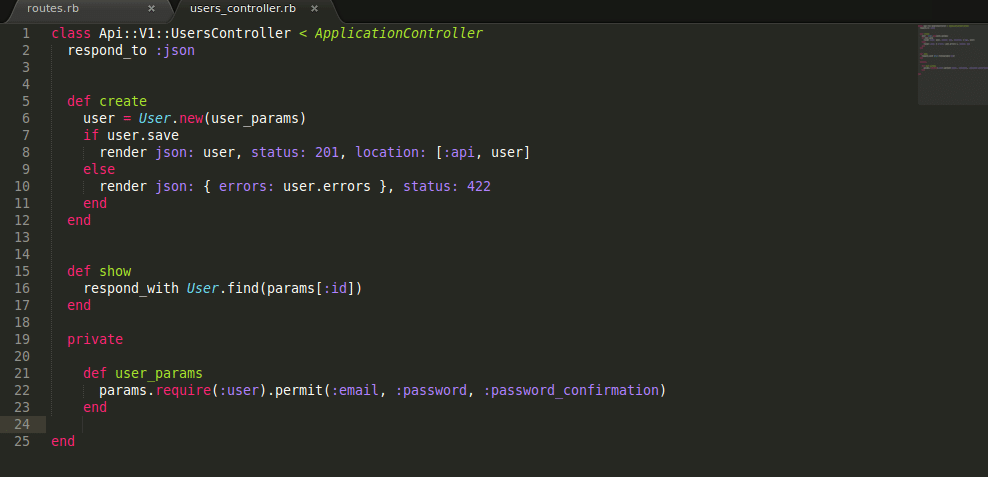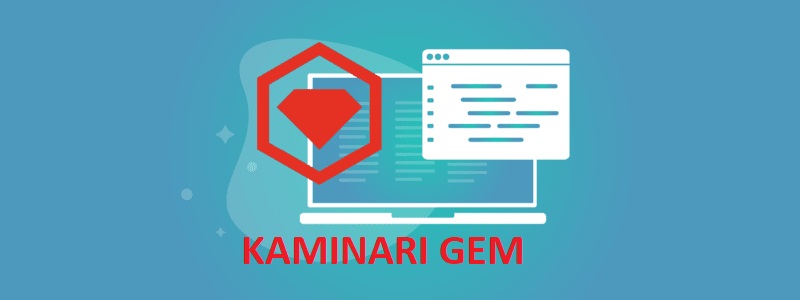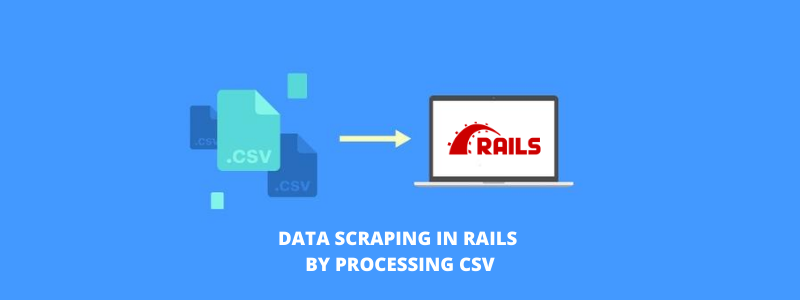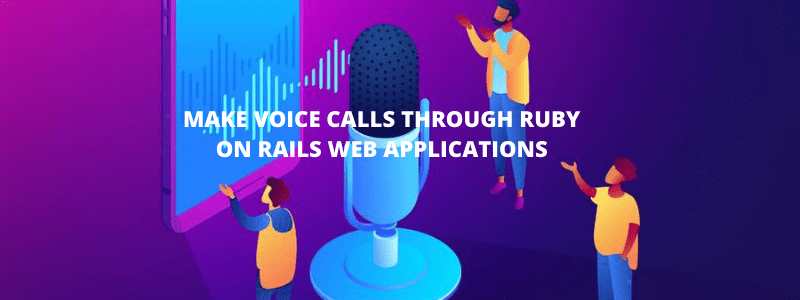Qu'est-ce qu'une API ? Pourquoi une API dans ROR ?
An API is an application programing interface. It’s an interface between inside and outside where outside interact with inside using codes. So the inside could be a server or devise like mobile, IPad, software libraries like Ruby on Rails, JQuery etc., interacting with HTTP through the web.
API’s are built as a component of the application. Basically we need to have a web API if we want to store and process our data in server and let any other application (web application, mobile application, iOS devices etc.) request and get data from that server if needed. These other applications can be part of your system or you can open your data for others to use.
Avantages de la création d'une API
Nous pouvons séparer le front-end en Angular JS, Ember JS ou d'autres frameworks clients populaires pour créer une interface utilisateur personnalisée.
Avantages :
- Beaucoup de flexibilité
- Coût de maintenance réduit
- Une plus grande évolutivité
- Simplicité
- Le développement d’API permet également d’intégrer facilement d’autres interfaces utilisateur, ce qui fait gagner beaucoup de temps.
Inconvénients de la création d'une API
- Étant donné que le codeur envoie des messages à plusieurs reprises avec des informations redondantes, cela augmente la bande passante.
- Latence négligeable
- L'utilisation des en-têtes est maladroite et lie l'API à la réponse HTTP.
API REST dans Rails
Representational state Transfer convention for Hadoop developed in Web.is the software architectural style for the web. The architecture is used for giving flexibility to retrieve data through some endpoints. It runs over HTTP protocol.
How does one makes an API REQUEST?
URL = HTTP, HOSTNAME, URL
E.g. URL: -https://portal.ehealthpro.com/blogs
Protocol SERVER URL
Each resource has two URI’s, one represents the collections of the list i.e., https://portal.ehealthpro.com/blogs and other represents the item, i.e. it represents the single item in that collection https://portal.ehealthpro.com/blogs/12
For building an API, We can use the Gem called “gem rails-api”
https://github.com/rails-api/rails-api , Generally, API needs to respond to uniform resource identifier (URI) and HTTTP. So,
In Routes,
Espaces de noms
Rails generator create a Userscontroller and related routes specs. In the above routes, by defining a namespace under the routes.rb file, Rails will automatically map that namespace to an index coordinating the name under the controllers folder, the api/ directory. And the response we are acheiving via JSON format, so we just need to specify this format as the default one. Setting the API under a subdomain due to escalate the application to a DNS level.
And path option is to set the starting path for any request to be root in relation to the subdomain.
Gestion des versions
Versioning the application provides the basic structure to the API, and also when changes needs to be done then we can give developers the opportunity to adapt for the new features while old ones are being deprecated. In order to set the version for the API, we first need to add another directory under the API we created i.e. “v1”.we can add scope our API into different versions according to our convenience.
Scope module: :v1,
Constraints: ApiConstraints.new(version: 1, default: true) do
………
End
Génération du contrôleur
Command use to generate the User controller, rails generate controller API:: v1::users
In controller we need to do the requests respond with JSON data, Technically JSON is a lightweight data-interchange format, a collection of name/value pairs. In various languages, this is realized as an object, record, struct, dictionary, hash table, keyed list, or associative array.
In rails, there is a gem called Active model serializer for implementing the JSON response. By using this gem we will get the proper format of the JSON.
Active Model Serializer is a great way to build JSON responses using an object oriented approach. The objects have a very similar feel on how your ActiveModel object is set up in terms of attributes and relationships. It likewise permits you to pick your connector to decide what type of JSON structure is produced-or to build your own.
HTTP Status code, is just way to uniformly tell the person what the respond is, whether the response shows error or not.
And some of the status code are,
200 – OK , Successful Get
204 – No content, Successful Delete or Post
201 – Created – Successful Post
422 – Unprocessable Entity
401- Unauthorized, Authentication Failure
SÉCURITÉ
For the security reason in our API application, we can use HTTPS,
Rails.application.configure do
config.force_ssl = true
fin
Enfin, tester l'API, S
comand line: – curl or htttpie
Browser: – Postman, JSON-Formatter
Rspec :- Request Specs
Rails Minitest :- Integration tests
RailsCarma fournit des services de développement et de conseil Ruby on Rails depuis 8 ans. Nos développeurs maîtrisent bien toutes sortes de travaux de développement de Ruby on Rails et gérer tout type de projet. Contactez-nous pour en savoir plus sur nos compétences en développement et les projets que nous pouvons gérer.






